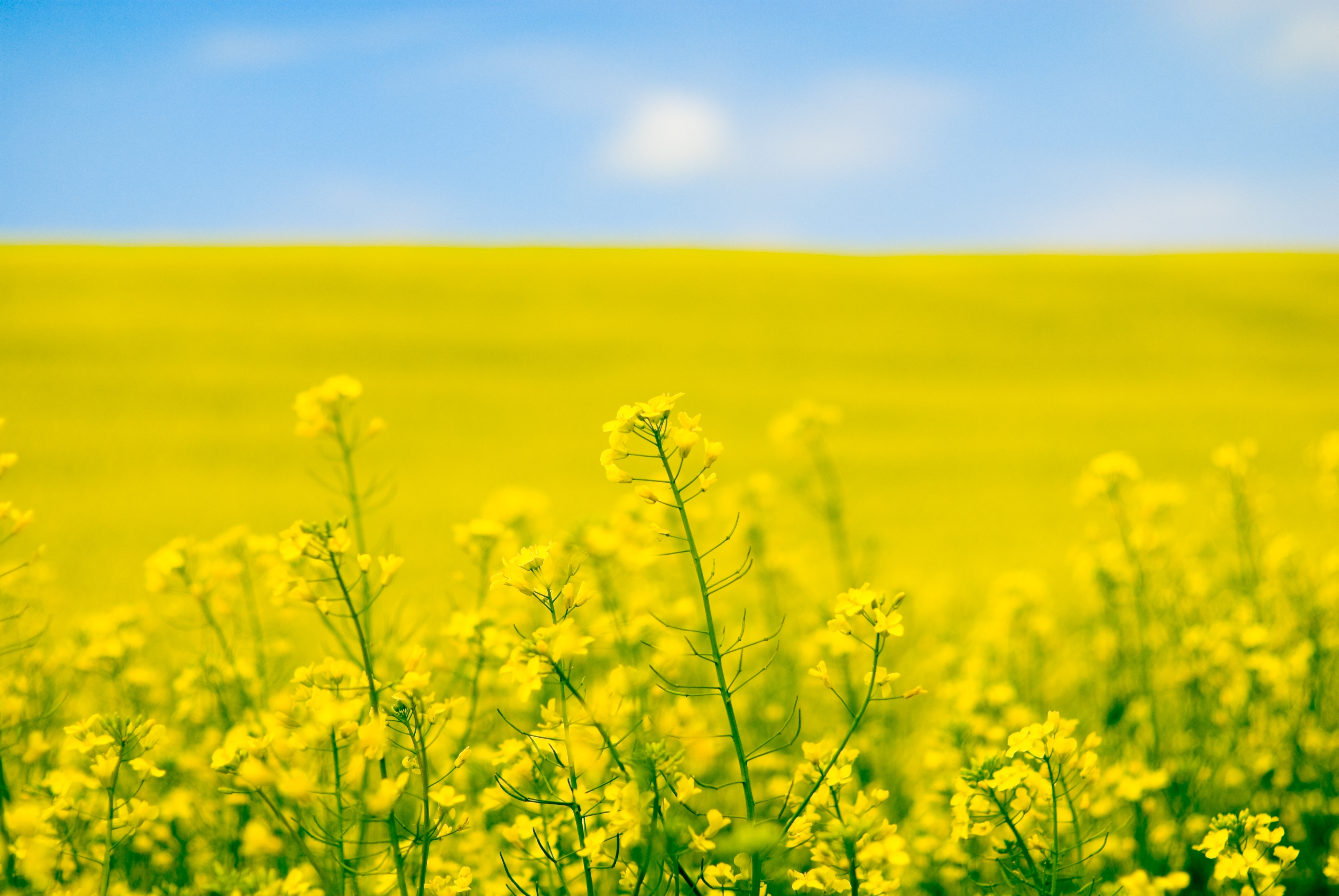Canola
The imagery of blooming yellow canola fields is a symbol of the prairies. It is cultivated for human consumption, fodder, and increasingly for biofuels. Biologically speaking, canola is in the same family as mustard. For our culinary uses, we categorize it as a plant or vegetable oil. In the culinary world, canola (also referred to as rapeseed), is a commonly used type of vegetable oil. In fact, in 1994-95, canola surpassed wheat as Canada's largest cash crop. (Canadian Food Words by Bill Casselman p 233)

Growing
If you've ever driven in the countryside in the Canadian prairies in the summer then you have seen the gorgeous golden fields. The tiny yellow flowers produce a seed which then matures and ripens before getting harvested. Each seed yields around 40% oil (Flavours of Canada p 59).
History
Canola has existed across Asia for years and years. Canola experiments and agricultural analyses (not to mention ideal growing conditions in this climate) has led to huge canola crops. Canada exports quite a lot overseas.
In WWII, canola crops made their first appearance since it was discovered that rapeseed oil could be used as a lubricant for machinery. Afterwards, Canadian scientist, R.K. Downey, hybridized the plant to be low in cholesterol and high in monounsaturated fat. The name "canola" was coined by combining "Canadian" with "oleum" (as in oil). (Canadian Food Words by Bill Casselman p 234)
Ways to Cook
Canola oil is considered a fairly neutral oil. It has a neutral (not too strong) flavour which means that it can be used in cooking without overpowering other flavours, unlike olive oil. Because of its bland taste, canola is sometimes blended in with olive oil or other vegetable oils to reduce the cost. (Read food labels!)
The smoke point is around 200⁰C (392⁰ F) which is also mid-range. Remember that cooking with too high a heat can cause your food to taste burnt and even start a fire spontaneously!
Cost-wise, canola is can be economical in Canada. Canola also does not go rancid as much as nut-based oils.
Canola can be a good choice of oil for cold preparations such as salad dressings and mayonnaise.
You may have heard about canola in terms of a "healthy fat". Canola oil is considered heart healthy because of it's low level of saturated fat. (It is unsaturated, mainly monounsaturated.)
More on Canola
Canola Recipe Links
Some of our favourite videos
Alberta Canola Producers
Highwood Crossing
About this producerFoods from this producer:
